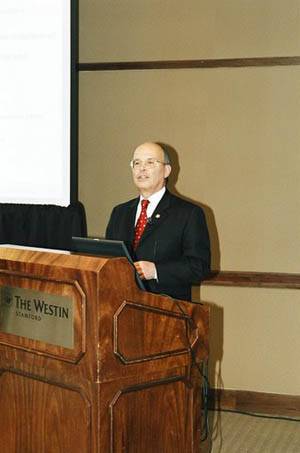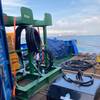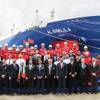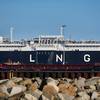BV Focuses on Access Safety
Bureau Veritas has developed guidelines intended to reduce the number of accidents to
seafarers and surveyors during the inspection and maintenance of ships
structures. The guidelines will help yards to design in safety in
detail.
Guidelines for the Design of the Means of Access for Inspection,
Maintenance and Operation of Commercial Ships provides design
requirements and best practice advice for safe user-centred design of
the means of access onboard ships of any type. Aimed at shipyards and
designers, it has the potential to reduce the incidence of common slips,
trips and falls during access from the current level of more than 40 per
cent of non-fatal shipboard injuries to almost nothing.
Bernard Anne, managing director of BV's marine division, says, "Our
experience in the offshore industry has shown that a detailed focus on
user-centred design of the details of access means, such as ladders and
hatchways, can reduce common accidents to almost zero. We want to spread
that benefit to merchant ships. We know we can ensure owners get robust,
fit for purpose ships through our rules, now we want to extend those
rules to focus on detailed elements which will make the ships safer for
crew members and surveyors. These guidelines are the first step in that
process."
BV's guidelines are based on a rigorous research programme, questioning
of actual users and the application of ergonomic principles to design.
The research identified the most risky means of access as ladders,
openings (vertical and horizontal) and elevated passageways. The main
causes of accidents were lack of handles, location of the openings, lack
of space for surveying or working safely (on platforms or around ladders
for instance), lack of space for using the means of access with comfort
and confidence and poor marking of hazards.
"These are all issues which can be addressed through a well thought out
design which focuses on what the user needs, rather than what is easiest
to build. The MCA estimates that 23 per cent of the insurance payouts
for shipping accidents are due to slips, trips and falls," says Anne.
"That's a lot of hurt seafarers, a lot of time lost and money wasted. We
will move through the ship design and operation and examine each area in
detail, applying the best techniques from every industry we work in to
help seafarers to have a safer environment. These guidelines will be
incorporated into our Rules, and we shall shortly be producing the next
set, focussed on safe design for the machinery spaces."













